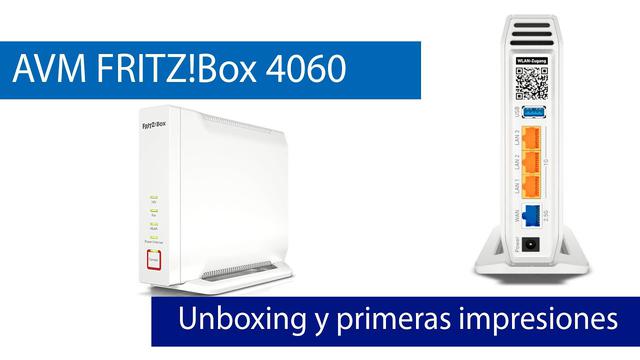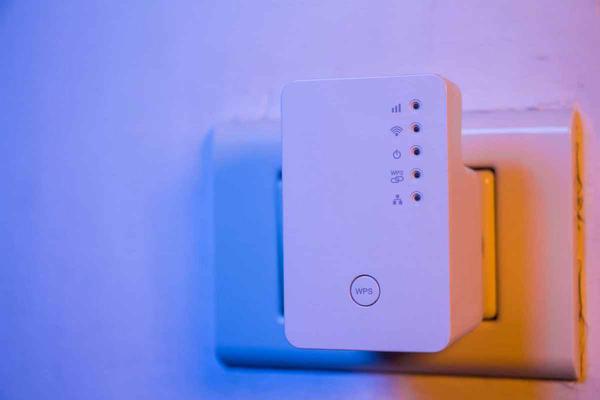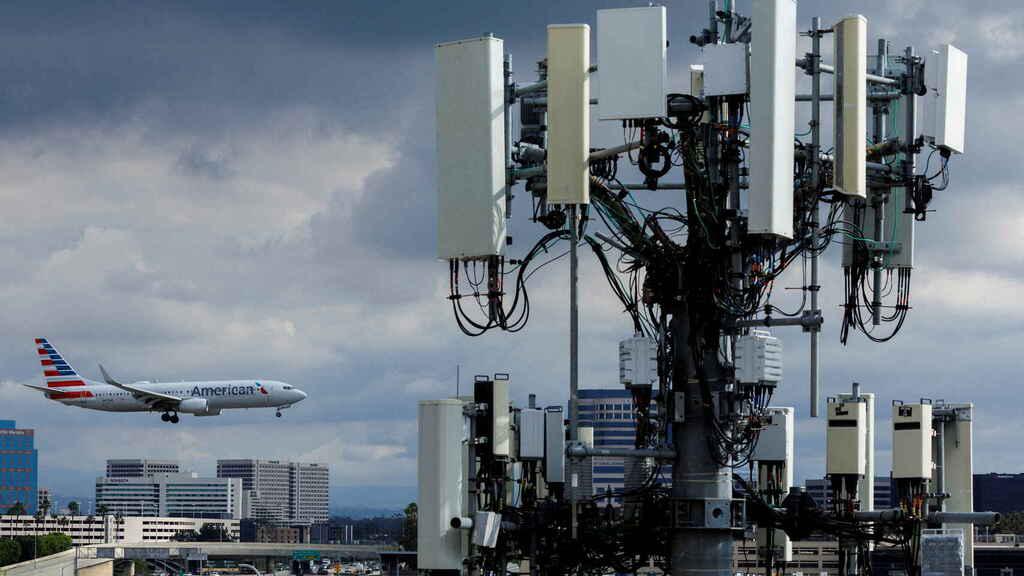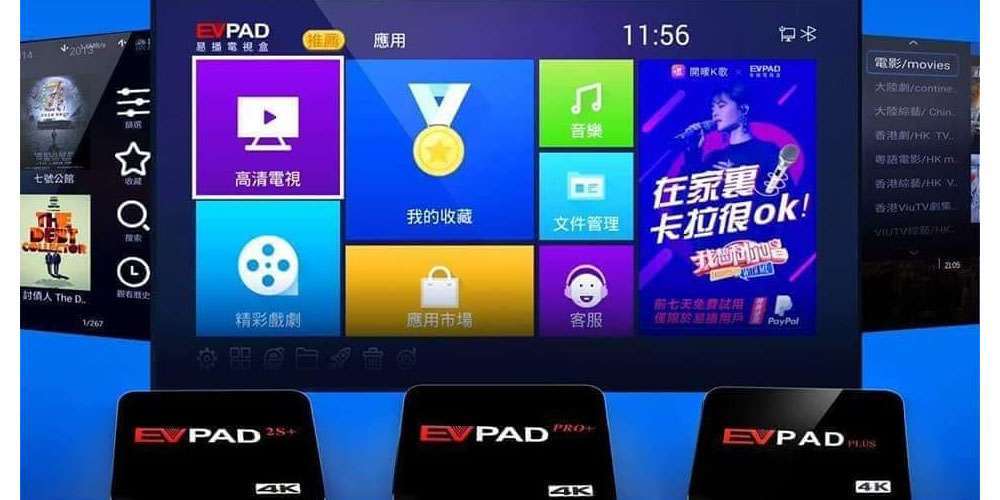All about WiSA, the wireless connection for your home theater system
- Smart House
If your favorite pastime is enjoying the best series, movies or sports on your TV, having the best screen at your disposal is not enough. A good home theater system must be accompanied by the best possible sound, but what if you do not want to get into trouble with the wiring? Here we are going to tell you everything about WiSA, the solution for that problem.
What is it about? WiSA is a standard that is intended to simplify home theater sound by eliminating cables from speakers and even the A/V receiver. It is supported by more than 70 manufacturers, including LG, TCL, Toshiba, Klipsch, and Bang & Olufsen.
Despite its importance and impact, there is not much information about what it is, how it works and what you need to know in order to make an informed decision. Next, we guide you in detail.
What is WISA?
WiSA is a hardware and software specification for transmitting high-resolution digital audio wirelessly from one source device to up to eight powered speakers in the same room.
It does this with a high degree of reliability, using 24-bit signals at 48 or 96 kHz, and has support for 3D audio formats like Dolby Atmos and DTS:X.
A home theater system with WiSA allows you to place your speakers anywhere you like, as long as they have access to a wall outlet. This eliminates the need for speaker cables and, in some cases, the need for an A/V receiver (more on this later).
Your WiSA components communicate with each other wirelessly, making the installation process easier.
What WiSA is not
Although it shares many attributes with wireless multi-room speakers like those from Sonos, Denon, Yamaha and others, WiSA is not a multi-room music system for the entire home.
As a standalone wireless audio technology, it is not intended to join any of these other wireless audio ecosystems. It is strictly for streaming audio wirelessly within a single home theater setup and is not compatible with non-WISA Wi-Fi or Bluetooth speakers.
That said, some WiSA-certified speakers, like Harman Kardon's new Citation series, have separate Wi-Fi or Bluetooth connections, meaning they can be used for other applications as well.
Why might I be interested in WiSA?
The main advantage of WiSA is that it frees users from having to install or even think about speaker cables in a single room. If you've ever wanted to enjoy the benefits of a true 5.1 or 7.1 surround sound system, but were hesitant due to cabling requirements, WiSA is for you.
Additionally, WiSA speakers can offer sound performance advantages, as the speakers' built-in amplifiers can be customized for your specific components.
This should, in theory, allow WiSA speakers to outperform all of the most compatible amp/speaker setups in their class.
Another benefit: If you want, you can mix and match a set of WiSA-compatible speakers from multiple brands, for more flexibility than you would with a soundbar-based system, or a proprietary system like Sonos.
What do I need to get started with WiSA?
There are two ways to work with WiSA.
WiSA Ready TVs
WiSA Ready devices, such as 2019 and 2020 LG TVs, have the necessary software to allow you to control a set of WiSA speakers, but do not have a built-in WiSA transmitter. WiSA Ready products require a USB WiSA transmitter, such as the Axiim Link HD.
$229 FROM KLIPSCH
Several TV manufacturers have joined WiSA, including Toshiba, Fengmi, LG, Foxconn, TCL, Bang & Olufsen, Hisense, and Toshiba, which means we are likely to see more WiSA Ready and WiSA Certified TVs.
Once the transmitter is installed, the TV gives you full control over your wireless speakers via an on-screen interface. All you need at that point is one or more WiSA Certified speakers.
Non WiSA Ready TVs
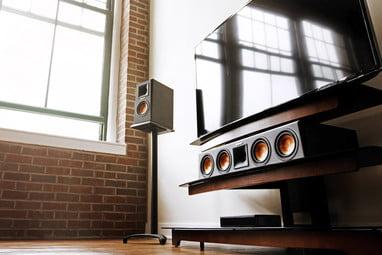
If your current TV is not WiSA Ready, you can add WiSA compatibility via WiSA transmitters connected to optical or HDMI ports like the Q UHD Wireless Media Center or the new $180 WiSA SoundSend, which hit the market in November 2020.
Again, once this type of transmitter is installed, you'll need some WiSA-certified speakers, such as Harmon Kardon's Citation series and Klipsch's Reference.
All-in-one wireless home theater
If you prefer a simpler route, some companies are starting to sell all-in-one WiSA home theater systems that include everything you need to have your WiSA system. For those who have WiSA Ready televisions, the Platin Audio Monaco 5.1 is a good option. For those who are happy with their non WiSA Ready TV, the Enclave Cinehome II and Cinehome Pro offer the option of a WiSA Certified device that allows you to connect to any TV via HDMI ARC.
No A/V receiver, really?
You're reading that right: If you have a native WiSA Ready device or a WiSA certified source device, you won't need an A/V receiver. These two types of WiSA sources can handle all aspects of streaming wireless audio to your WiSA-certified speakers.
That said, if you wish, you can use an A/V receiver in a home theater setup with WiSA. The receiver must be WiSA Ready (with an additional transmitter) or WiSA Certified.
Until now, only two such devices are on the market, the SC15 Prisma and the PRE35 Prisma, both from the Scandinavian company, Primare.
Using a WiSA A/V receiver on top of the current generation of WiSA streaming devices, such as LG TVs, Windows 10 PCs, and Xbox consoles, offers several benefits:
Are all WiSA configurations the same?
No. Although the WiSA ecosystem ensures compatibility and wireless performance of WiSA certified products, there may be differences between one WiSA configuration and another.
"The core WiSA Ready certification specification focuses on interoperability, reliability and signal integrity, but additional features can be easily added at the discretion of the brands developing the products," said WiSA President Tony Ostrom. to Digital Trends in Spanish.
An example of these additional features is the Axiim Link HD, a USB WiSA transmitter that works with newer LG WiSA Ready TVs and other WiSA Ready devices. It incorporates multiple advanced features including bass management, channel level control, and channel EQ, controlled via the Axiim mobile app.
The WiSA SoundSend works the same way, using a mobile app to set up a variety of features, including a personalization feature called My Zone, which lets you indicate the distance from the viewer to all the speakers in the room.
Not all WiSA USB transmitters will necessarily offer similar controls, though Ostrom tells us that future iterations of the WiSA specification "will require the addition of some advanced features that we think are very useful for setting up a typical multi-channel audio system."
Another important difference is the support for specific audio codecs. Although WiSA makes it possible to experience a variety of codecs and formats, such as Dolby Digital Plus, Dolby TrueHD, Dolby Atmos, DTS:X, and others, your specific equipment must also support them.
Just because a product is WiSA certified doesn't mean it supports Dolby TrueHD, for example.
Another important caveat is that there is not always a one-to-one relationship between the type of audio a source device can handle and what it can support through a WiSA configuration.
For example, 2019 and 2020 LG OLED TVs support Dolby Atmos, meaning they can pass through Dolby Atmos soundtracks via HDMI ARC to an Atmos-enabled receiver.
That receiver can use as many channels as it supports, to recreate the full Atmos effect. But, when that same LG TV is connected to a set of WiSA speakers via a WiSA transmitter, it will only support 2.0 or 5.1 configurations, but not Dolby Atmos.
WiSA released a firmware update in June 2020 for existing speakers and transmitters that allows manufacturers to add Dolby Atmos support, but so far we haven't discovered any that have done so.
When Digital Trends en Español approached LG to find out if and when it plans to include WiSA Atmos support in its TVs, a representative told us that “there is no current plan to upgrade the WiSA capability compatible with our TVs, but it will continue.” evaluating in the future.”
When it comes down to it, WiSA really is like a wireless speaker cable: it creates the connection between the WiSA components, but it's the components themselves that dictate the features and overall quality you'll get, so research the specs. carefully before making a purchase decision is imperative.
Can older equipment be used to transmit WiSA signals?
Yes! Well, in theory it should be possible.
Any existing device that supports audio output through a USB port and can receive firmware or driver updates, such as a newer laptop, game console, or television, can theoretically be made to work with a WiSA transmitter. "With the right user interface elements, upgrading existing products is a fairly simple process," said Ostrom.
Normally, this would mean that a device like Microsoft's Xbox One, which doesn't offer built-in support for audio over USB, wouldn't work with a WiSA transmitter.
However, Ostrom tells us that the Axiim Link WiSA USB transmitter is Xbox certified and will deliver the console's audio signal wirelessly to WiSA certified speakers.
In theory, this could mean WiSA support for consoles like Sony's PlayStation 4 and PS4 Pro in the future, though they don't officially support USB audio either. For now, though, you'll need to connect them through a WiSA-compliant or certified source device, such as a TV or A/V receiver.
How is WiSA different from other wireless speaker technologies?
The two biggest issues with traditional wireless surround speakers are latency and timing. If you're just listening to music and it takes 100 milliseconds for the signal to get out of your audio source, like a computer or hi-fi amp, that's not a big deal.
In fact, once the music starts, as long as you don't encounter any hiccups along the way, that delay is irrelevant. But when your audio is part of a video's soundtrack, every millisecond counts.
The longer it takes for the audio signal to reach your speakers (and therefore your ears), the more likely you are to see someone's lips moving on the screen before you can hear their words. WiSA's wireless signal path reduces this latency to just five milliseconds, an imperceptible delay.
Synchronization between speakers can cause similar problems. If your left and right channels are out of sync, you will definitely notice distortion in the form of an echo effect.
WiSA uses a specific portion of the 5GHz Wi-Fi spectrum that has much less traffic and therefore less interference than standard 2.4 Wi-Fi channels. The transmitter constantly scans these 24 frequencies for interference and can automatically switch to a different one if interference appears on the channel you are using.
The other benefit of using 5GHz frequencies is bandwidth. These channels allow WiSA to transmit uncompressed 24-bit audio at very high sample rates, something that would be difficult or impossible to do in lower portions of the radio spectrum.
The only downside to using 5GHz frequencies is that they don't stretch very far before they start to lose steam. To preserve the full quality of the audio signal, WiSA transmitters and speakers cannot be located in different rooms. The largest room size that WiSA supports is 30 x 30 feet.
What about sound bars?
One of JBL Bar 9.1 detachable wireless surround speakers
Home theater soundbars have become a very popular choice thanks to their incredible simplicity and good sound quality. Many now support wireless subwoofers and Dolby Atmos through up-firing height channel drivers, increasing their ability to deliver surround sound.
JBL's $1,000 Dolby Atmos 9.1 soundbar, unveiled at CES 2020, takes a page out of the WiSA playbook by featuring detachable true wireless surround speakers that overcome the box limitations of conventional soundbars. If this format is successful, it could prove to be a more cost-effective alternative to WiSA-based systems.
choose wisely
In a standard, wired home theater system, the speakers, EQs, an amplifier (such as an A/V receiver), and the source and playback device (such as a Blu-ray player) all contribute to sound quality. But because all WiSA Certified speakers have their own power supply, amplification is done exclusively at the speaker level in WiSA home theater systems.
In theory, this can produce superior performance, but the speakers you choose will have a huge effect on overall volume and sound quality, so choose the right ones. Replacing just your receiver won't get you the boldest and best sound from your WiSA system — you'll need to replace your speakers. So make sure your WiSA speakers have enough power to fill the room if you want the full effect.


